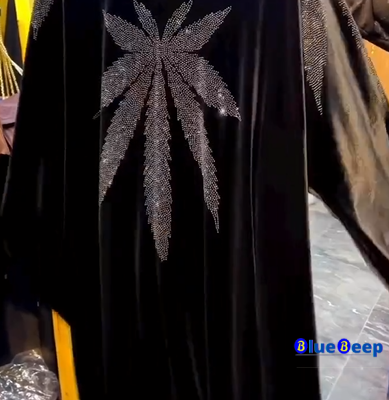The Evolution of Abayas: From Traditional Garment to Fashion Statement
The Evolution of Abayas: A Fashion Timeline The abaya is a traditional garment worn by women in many Middle Eastern and Muslim countries. It is a loose-fitting robe that covers the body from the shoulders to the ankles, often worn over regular clothing. Over the years, the abaya has undergone significant changes in style, design,…
The Evolution of Abayas: A Fashion Timeline
The abaya is a traditional garment worn by women in many Middle Eastern and Muslim countries. It is a loose-fitting robe that covers the body from the shoulders to the ankles, often worn over regular clothing. Over the years, the abaya has undergone significant changes in style, design, and fabric, reflecting the evolving fashion trends and cultural influences. In this blog post, we will take a journey through the fashion timeline of abayas, exploring their transformation from a traditional garment to a fashion statement.
Traditional Abayas: Simplicity and Modesty
The earliest abayas were simple and modest, designed to fulfill the requirements of Islamic dress code. They were typically black in color, made of lightweight fabric, and had long sleeves and a loose silhouette. The focus was on functionality rather than fashion, with the primary purpose being to cover the body and maintain modesty.
These traditional abayas were often plain and unadorned, with little or no embellishments. They were worn by women of all ages and social backgrounds, and their design varied slightly from region to region. However, the overall style remained consistent, reflecting the cultural and religious values of the time.
Modern Abayas: Fusion of Tradition and Fashion
In the late 20th century, the abaya started to undergo a transformation, influenced by the changing fashion landscape and the desire for more variety and individuality. Designers began experimenting with different fabrics, colors, and styles, while still adhering to the principles of modesty and cultural sensitivity.
One significant development was the introduction of new colors and patterns. While black remained a popular choice, women started embracing abayas in various hues, including pastels, neutrals, and even vibrant tones. Embroidery, sequins, and other embellishments also became common, adding a touch of glamour to the traditional garment.
Another notable change was the diversification of styles. Designers began incorporating elements from Western fashion, such as tailored cuts, asymmetrical hemlines, and different sleeve lengths. This fusion of traditional and contemporary elements allowed women to express their personal style while still adhering to cultural norms.
High Fashion Abayas: Redefining Elegance
In recent years, the abaya has entered the realm of high fashion, with renowned designers and luxury brands showcasing their interpretations on international runways. These designer abayas feature intricate details, luxurious fabrics, and innovative designs, elevating the traditional garment to a new level of elegance and sophistication.
High fashion abayas often incorporate elements of couture, such as hand embroidery, beading, and lacework. They may also feature unique cuts, draping, and layering techniques, creating visually stunning and fashion-forward pieces. These abayas are not only worn for religious or cultural occasions but also for special events and formal gatherings.
Furthermore, the rise of social media and online platforms has played a significant role in popularizing abayas as a fashion statement. Influencers and fashion bloggers from the Middle East have showcased their stylish abaya outfits, inspiring women around the world to embrace this traditional garment as a symbol of cultural pride and fashion-forwardness.
The Future of Abayas: Innovation and Sustainability
As the fashion industry continues to evolve, so does the abaya. Designers are now focusing on innovation and sustainability, creating abayas that are not only stylish but also environmentally conscious. They are exploring eco-friendly fabrics, such as organic cotton and recycled materials, and adopting ethical production practices.
Additionally, technology is being integrated into abaya design, with the incorporation of smart fabrics and wearable technology. This allows for features like temperature control, UV protection, and even interactive elements, further enhancing the functionality and versatility of the garment.
In conclusion, the abaya has come a long way from its humble beginnings as a simple and modest garment. It has transformed into a fashion statement, reflecting the changing tastes, cultural influences, and technological advancements of the modern world. Whether it’s the fusion of tradition and fashion or the high fashion interpretations, the evolution of abayas continues to redefine elegance and celebrate cultural diversity.















